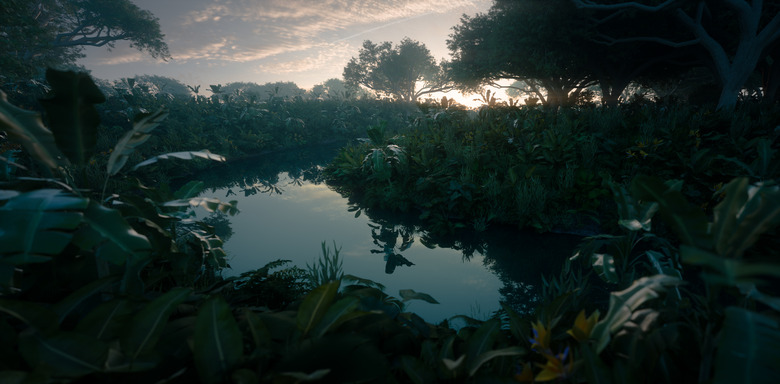Rainforest Adaptation
Adaptation is a characteristic used within the field of biology to describe how plant and animal species make adjustments within their environment in order to survive. Living organisms have different features that they use to blend in with their surroundings, defend themselves from predators and obtain food. Tropical rainforests plant, animal, tree and insect species have adapted to the conditions of their surroundings and they use these abilities to make the most of their existence.
Animal Adaptations
Animal Adaptations
Many animals have adapted their feeding habits to eating a specific animal or plant that another type of animal species cannot consume. This adaptation helps to maintain balance within the food web. Animals also make adaptations by using such capabilities as camouflage and poison. Some animals even have the ability to release a strong odor to drive away predators.
Plant Adaptations
Plant Adaptations
Rainforests are hot and humid regions of the world that receive a great amount of rainfall. One way that plants within the rainforest have adjusted to this significant amount of rain is by growing their leaves downward in order to divert excessive amounts of water to the ground. According to Zoosociety.org, only 2 to 5 percent of sunlight reaches the forest floor within rainforests and this is due to the height of the trees that grow in the area. Plants adjust to this condition by developing bigger leaves and longer stems. Some rainforest plants known as epiphytes have the ability to grown on the barks, branches, trunks and leaves of trees.
Insect Adaptations
Insect Adaptations
Insects make up the largest amount of living organisms within the within a rainforest. Beetles are one of the most dominant creatures that thrive within the rainforest (and on Earth) and close to 500,000 species exist. Insects adapt to the rainforest environment in different ways. For example, many beetles possess a hard substance called a cuticle, which acts as body armor for their protection. Glasswing butterflies have transparent wings, which allow these animals to look invisible. Some ants have developed oversized jaws, which are designed to fight against predators and other creatures that pose a threat to their colonies.
Trees
Trees
Most rainforest tree leaves are large and dark green, which aid them in capturing more sunlight for the photosynthesis process. Rainforest trees have branches that grow at the top part of the trunk to take in more sun and the bark on most of these trees is thin and smooth. Most tree roots grow near the top of the soil where nutrients are located, but they do have roots that extend deep into the ground and act as anchor for the tree. Since very little sunlight is able to reach the floor of a rainforest, trees have adapted their ability to grow. Some trees can stop growing for many years and wait for sunlight to reach their branches and some can capture only fragmented sunlight with the aid of special pigmentation.
Cite This Article
MLA
Miller, Steven. "Rainforest Adaptation" sciencing.com, https://www.sciencing.com/rainforest-adaptation-13407073/. 22 November 2019.
APA
Miller, Steven. (2019, November 22). Rainforest Adaptation. sciencing.com. Retrieved from https://www.sciencing.com/rainforest-adaptation-13407073/
Chicago
Miller, Steven. Rainforest Adaptation last modified March 24, 2022. https://www.sciencing.com/rainforest-adaptation-13407073/
